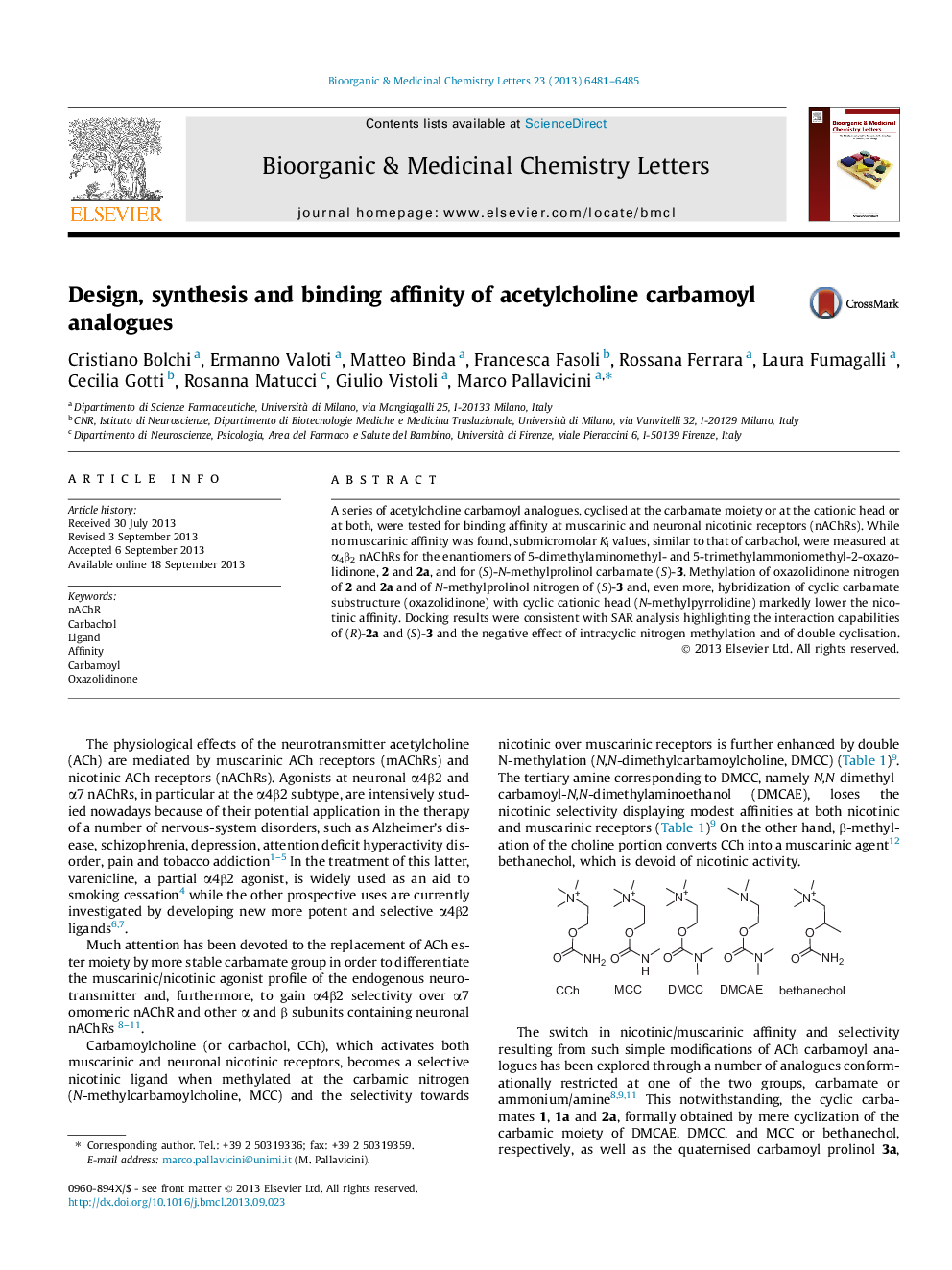| Article ID | Journal | Published Year | Pages | File Type |
|---|---|---|---|---|
| 10591342 | Bioorganic & Medicinal Chemistry Letters | 2013 | 5 Pages |
Abstract
A series of acetylcholine carbamoyl analogues, cyclised at the carbamate moiety or at the cationic head or at both, were tested for binding affinity at muscarinic and neuronal nicotinic receptors (nAChRs). While no muscarinic affinity was found, submicromolar Ki values, similar to that of carbachol, were measured at α4β2 nAChRs for the enantiomers of 5-dimethylaminomethyl- and 5-trimethylammoniomethyl-2-oxazolidinone, 2 and 2a, and for (S)-N-methylprolinol carbamate (S)-3. Methylation of oxazolidinone nitrogen of 2 and 2a and of N-methylprolinol nitrogen of (S)-3 and, even more, hybridization of cyclic carbamate substructure (oxazolidinone) with cyclic cationic head (N-methylpyrrolidine) markedly lower the nicotinic affinity. Docking results were consistent with SAR analysis highlighting the interaction capabilities of (R)-2a and (S)-3 and the negative effect of intracyclic nitrogen methylation and of double cyclisation.
Related Topics
Physical Sciences and Engineering
Chemistry
Organic Chemistry
Authors
Cristiano Bolchi, Ermanno Valoti, Matteo Binda, Francesca Fasoli, Rossana Ferrara, Laura Fumagalli, Cecilia Gotti, Rosanna Matucci, Giulio Vistoli, Marco Pallavicini,
